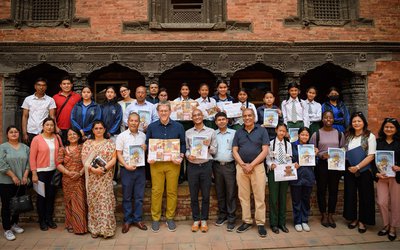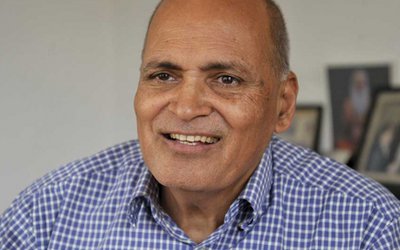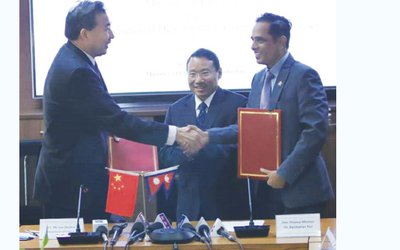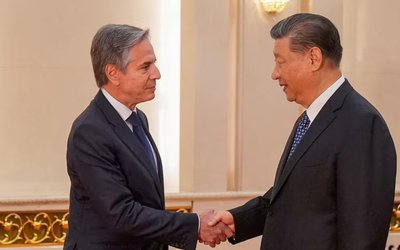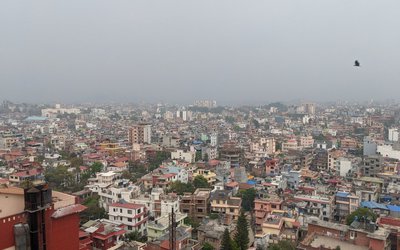The Nepal Electricity Authority has announced an amended version of load shedding schedule with an average of 14 hours of power cut in a week for now. A series of similar announcements can be expected to follow until the load shedding hours will stabilize around 14 daily. As the water level in all the rivers has already begun to decline, the NEA will announce frequent power outage routines after the Tihar festival.
According to energy sector experts, as many as 16 hours a day of load-shedding will be there by the end of February. This is the reality now. Till another five years, no big projects are in the pipeline for completion and addition of few MWs of power in the grid will not bring any substantial respite to the consumers.
“Don’t be surprised if the NEA announce up to 16 hours of load shedding,” said a former managing director of Nepal Electricity Authority. “Even the dream to end load shedding by bringing the 465 MW Upper Tamakoshi into operation will remain a dream as it is facing several problems related to management and others.”
Although the project created many positive expectations in the country and the region, the poor quality of leadership to deliver the results was hampering its progress, he said.
“It is unfortunate that highly paid, newly appointed MD of NEA has yet to hold a single meeting with contractors and consultants. This shows a gross negligence of the NEA’s management towards the project.”
The hydro generation capacity is about 650 MW. Projects with capacity of 750 MW are under construction. In paper, everything is alright as the government has long term projects for internal consumption and export.
“Recently, construction of 4.6 MW Mai Khola Hydropower project has been completed. In this fiscal year (2011/2012) 9 projects are going to be completed, adding 40 MW to the system and we are hopeful that another 14 projects totaling 42.24 MW will be completing. Likewise, in the coming Fiscal Year 2012-013, 289 MW is expected to be added in the grid from 28 projects,” said Minister of Energy Post Bahadur Bogati. We are also considering building storage projects like Buddhi Gandaki, West-Seti, Upper Seti (Damaulit) and Narsing. We also have projects like Upper Karnali, Arun III and Upper Seti.”
According to the official data, ready to go hydro projects for domestic use is 1500 MW and ready to go hydro projects for export is 4000 MW.
Many see there is a contradiction in the policy regarding the priority of the electricity production. At a time when the country is failing to produce energy for domestic use, nobody understands the government’s horridness to go for export projects.
“This is ridiculous. The priority must be in meeting internal demands. Only after this, we can talk about the export of electricity,” said former Managing Director of NEA on condition of anonymity. Instead of concentrating construction of big hydro projects back home, our officials are talking about the need to build Dhalkebar- Mujaffarpur Transmission line to import the electricity from India.”
“The demand for energy and the gap in supply and demand is increasing every year all over the world. If we take the example of our next door neighbor, India, which is to reach its goal of providing electricity to every citizen, the country needs to remove bottlenecks on development of all fuels used to generate electricity. Indians witnessed substantial energy and peak shortage of 9 percent and 10 percent respectively in the year 2010/2011. This may be accomplished by accelerating domestic hydropower development and importing power from any source available giving primary attention to hydropower from Nepal and Bhutan.”
Nepal Energy Investors Forum
In 1995, following the World Bank’s withdrawal from Arun III project, Nepal was option-less and faced severe consequences. Asian Development Bank came to rescue Nepal’s energy sector financing 114 MW Kali Gandaki Project. Though there are controversies regarding PPA signed with Independent Power Producers (IPPs), they too contributed over 100 MW in national grid preventing the crisis. The German government came up with the construction of 74 MW upper Marsyangdi project. Though the project was delayed due to prolonged political instability and violent conflict, it is now generating the electricity at the crucial moment.
“I would like to confirm that ADB remains a committed partner in the development of the government’s energy sector. Over the years, ADB has supported numerous investments in the sector and we plan to continue that support for the foreseeable future,” said Barry J. Hitchcock, country director of Asian Development Ban’s Nepal Resident Mission. ADB will continue its policy dialogue with the government to improve overall governance in the power sector, such as setting up a Nepal Electricity Regulatory Commission for carrying tariff reforms, promulgation of the Nepal Electricity Act and speedy financial restructuring of the Nepal Electricity Authority.”
ADB firmly believes them to be the essential ingredients for creating a conducive environment for private sector financing as well as co-financing from other development partners in hydropower development, and ensuing financial sustainability of the Nepal power Sector.
Organized by Asian Development Bank and Ministry of Energy, the recently concluded Nepal Energy Investors Forum, October 13-14, as many see it, was an effort to bring bilateral, multilateral, government and private sector together to discuss ways to find our solution to the energy crisis.
This forum was meaningful in the sense that after the closure of Middle Marsyangdi, except construction of smaller hydropower projects with a capacity of 2-3 MW, Nepal’s development partners have yet to finance a major project in Nepal. Although Nepal government is backing Upper Tamakoshi Hydro Power project, which is under construction through local investments, expecting it to complete by 2016, the current pace of project construction shows that it is going to be an impossible task.
“This is a good beginning as the forum helped us to listen to each other and find a way for future investment in hydropower sector,” said Matthias Goulnik, vice-president German DEG Bank. “Given the conducive environment, the fund is no problem.”
Crisis of Power
Nepal needs to quickly construct at least a couple of big projects. If the project is not built to meet the present rate of growth, there will be a huge shortfall in demand and supply. Currently Nepal’s installed capacity is 705.4 MW and 700.9 MW in grid. This includes 647.5 MW hydro and 53.4 MW thermal. Out of the total capacity, run of the river projects contribute 555.5 MW and storage capacity 92 MW. The contribution of IPP is 174.5 MW and Nepal Electricity power contribution is 361 MW.
The government claims that there are projects of 750 MW capacity under construction and ready to go hydro projects for domestic consumptions are of 1500 MW capacity and ready to go hydro projects for export is 4000 MW and other 10,000 MW at various stages of development.
Energy experts argue that there is a huge gap of energy supply in the period of dry and wet seasons. “Annual peak demands for 2011 were 946.10 MW. Dry season generation is merely 450 MW and there is a deficit of 500 MW. Annual total energy demand is 4,833.35 GWh and generated energy from available sources is 3,850.87 GWh. There is 982.48 GWh energy gap.”
One of the problems in Nepal is that there is no direct financing between government, Bank, private developers and government. At a time when the banks have limitation of policy and limitation of funds and private investment is not sufficient to meet the crisis, the government must enter in the construction of projects, said Surya Nath Upadhyaya, water resources expert.
Financial Crunch
Despite the claims of some of the commercial banks, they virtually lack the money for the long term investment in hydropower sector. Nepal’s bankers argue that there is risk and they need to wait for long period for return and that argument does not help Nepal’s commercial banks put huge money in the sector.
Per MW cost of hydropower is 150 million. Nepal requires an increase of 100 MW of power annually. That means Nepal needs a huge investment. Private commercial banks can provide up to 15 billion rupees, so there is a huge gap. The need of the hour is pooling resources from government, private equity and foreign investment.
“Energy development cannot be accomplished by our internal resources alone, so the external resource is a must for this. In this respect, we have recently set up a Hydropower Development and Investment Limited as a public company to generate and mobilize funds for developing medium and large sized hydro electric projects,” said secretary Poudel.
Sriranjan Lacoul, joint secretary of Ministry of Energy, holds the view that Nepal’s licensing procedure for hydropower developers is more liberal. There is no hindrance for private investors to repatriate their investments in foreign currency.
Asian Development Bank has been helping Nepal for quite a long time in energy sector. “ADB has been assisting in generation, transmission, distribution and rural electrification. In 2011, ADB provided loan to strengthening Butwal Mahendranagar 132 kV line, construction of Tamakoshi (Khimti) - Kathmandu 220/400 KV line. It also supported distribution system strengthening and rural electrification, rehabilitation of two small hydropower plants and implementation support for Tanahu 127 MW project technical design and investment support,” said Priyantha Wijayatunga, senior energy specialist, Asian Development Bank.
Presenting a paper on experiences and lessons, Hydropower Investment of SINOHYDRO holds the view that Nepal has immense potential for the hydropower development. With sufficient local skilled and unskilled staffs, the SINOHYDRO is now building 50 MW power project along with a Nepalese private company.
It has already completed construction of Modi Hydro, Ilam Hydroelectric project, Kulekhani Hydroelectric Project civil works and Upper Tamakoshi Hydro-electric Project, civil works. “We are ready to invest in Nepal given the removal of some hindrances particularly convenience on custom clearance, work visa and license. There is also the need to have tax reduction on raw material, construction equipment, vehicles and incomes (rate reduction or exemption),” said the local representative.
Dr. Sandip Shah, vice president and country director, SN Power holds the view that the main challenge before the hydropower sector is its sustainability. Similarly, Gyanendra Lal Pradhan, chairperson of Energy Committee of FNCCI argued that Nepal needs to remove the barriers in financing and licensing.
Nepal has a great potential for foreign investment and there are great attractions for Nepal’s power sector because extensively largely untapped resources, critical domestic power demand, electricity hungry neighbors and strong donor interest support hydro development.
According to D.N. Sharma, managing director of Nepal Electricity Authority, Nepal’s energy supply situation is mired by huge supply demand gap. “We have severe capacity and energy deficit. There will be 14 hours per day load shedding during dry session. We require 350 MW firm capacities for dry season deficit. “This needs 2 billion dollars investment to meet today’s requirement. Nepal is expected to have higher demands of electricity in coming years. NEA is the sole body in Nepal for generation, distribution and transmission. It has obligation to sign PPA with all even paying foreign currency for return and provide transmission network within the country. NEA has been playing a role of single buyer and seller
Although the two-day Energy Investment Forum meet discussed the wide range of issues related to hydro power development, including the role of private sector, public sector and Nepal’s capacity as well as fund requirement to upgrade the present infrastructure like transmission line and construction of new projects, the confusion still persists as to what is Nepal’s priority for investment: export oriented power projects or projects for domestic consumption.
Until Nepal’s policy makers improve their capability in delivery, any policy will have very little impact in reducing the current power crisis. For instance, upper Tamakoshi began with all the rhetoric but the pace of the project shows that it will be very difficult to complete it as it was projected.
As Nepal is facing huge shortfall of power, Nepal’s priority now must be to ensure they can complete the projects as scheduled. In the present context of political instability and chaos, how ADB’s initiative, which is positive, can prevent Nepal’s power crisis remains to be seen.
- TANAHU HYDROPOWER PROEJCT: A Significant Achievement
- Apr 15, 2024
- AMBASSADOR HANAN GODAR: Sharing Pain With A Nepali Family
- Mar 30, 2024
- VISIT OF KfW AND EIB TO NEPAL : Mission Matters
- Mar 25, 2024
- NEPAL BRITAIN SOCIETY: Pratima Pande's Leadership
- Mar 24, 2024
- NEPAL ARMY DAY: Time To Recall Glory
- Mar 15, 2024

